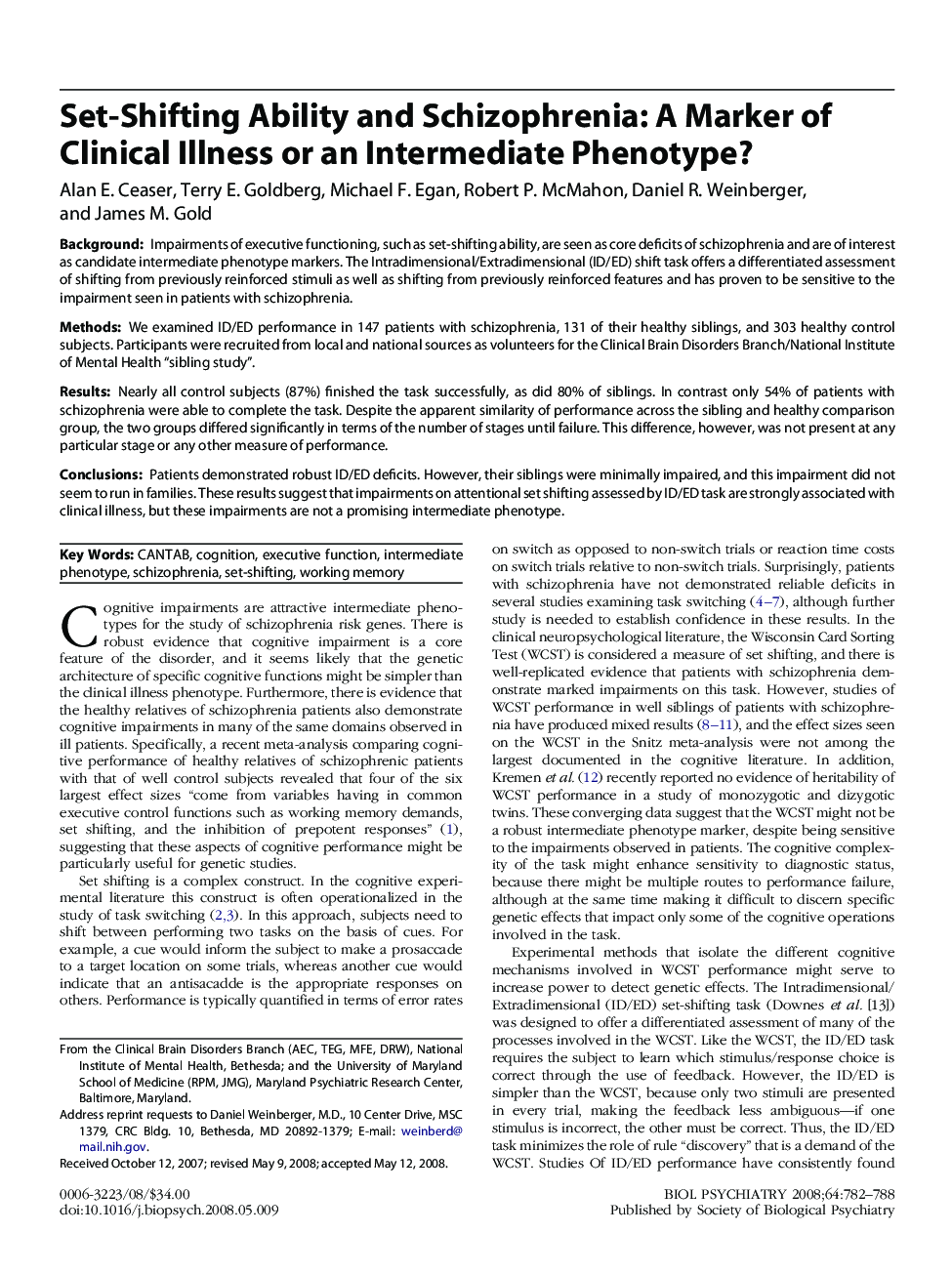| Article ID | Journal | Published Year | Pages | File Type |
|---|---|---|---|---|
| 4179556 | Biological Psychiatry | 2008 | 7 Pages |
BackgroundImpairments of executive functioning, such as set-shifting ability, are seen as core deficits of schizophrenia and are of interest as candidate intermediate phenotype markers. The Intradimensional/Extradimensional (ID/ED) shift task offers a differentiated assessment of shifting from previously reinforced stimuli as well as shifting from previously reinforced features and has proven to be sensitive to the impairment seen in patients with schizophrenia.MethodsWe examined ID/ED performance in 147 patients with schizophrenia, 131 of their healthy siblings, and 303 healthy control subjects. Participants were recruited from local and national sources as volunteers for the Clinical Brain Disorders Branch/National Institute of Mental Health “sibling study”.ResultsNearly all control subjects (87%) finished the task successfully, as did 80% of siblings. In contrast only 54% of patients with schizophrenia were able to complete the task. Despite the apparent similarity of performance across the sibling and healthy comparison group, the two groups differed significantly in terms of the number of stages until failure. This difference, however, was not present at any particular stage or any other measure of performance.ConclusionsPatients demonstrated robust ID/ED deficits. However, their siblings were minimally impaired, and this impairment did not seem to run in families. These results suggest that impairments on attentional set shifting assessed by ID/ED task are strongly associated with clinical illness, but these impairments are not a promising intermediate phenotype.
